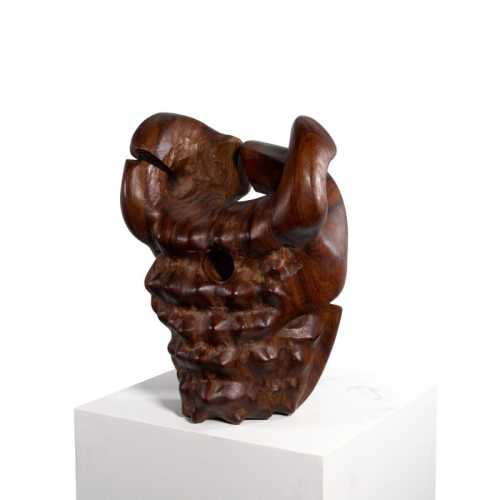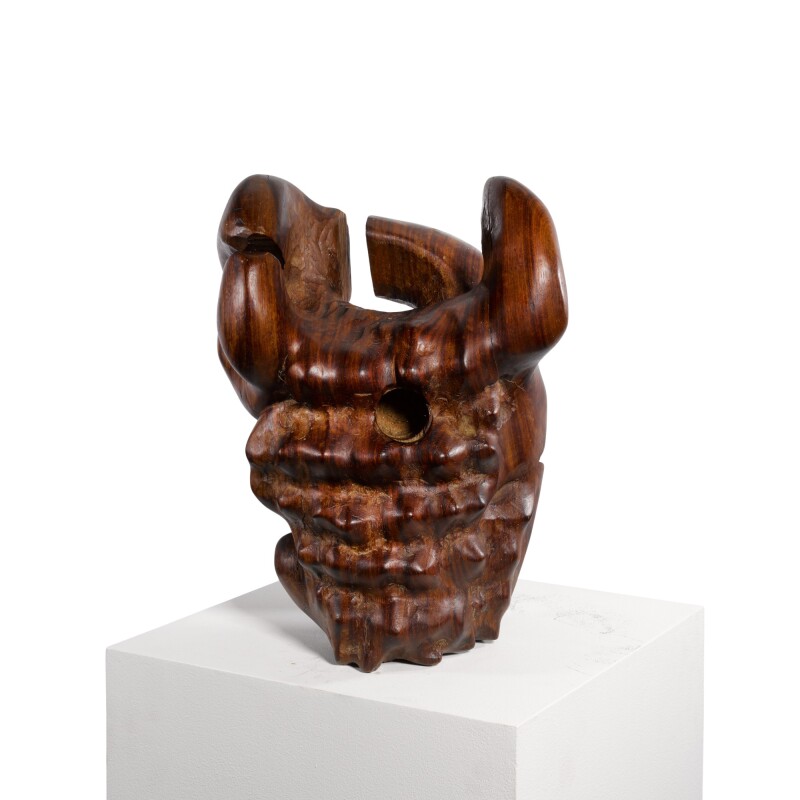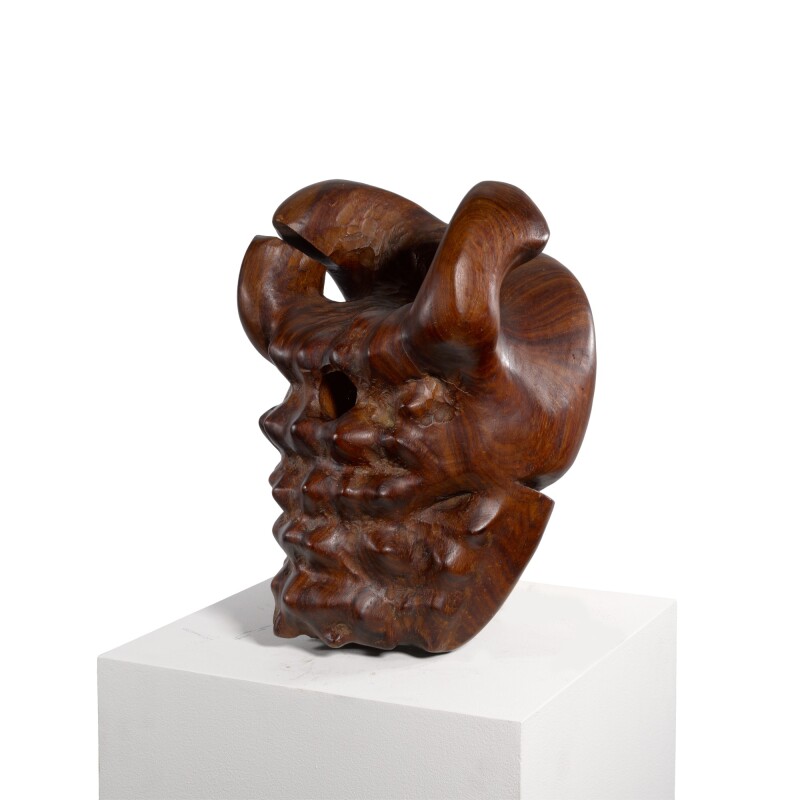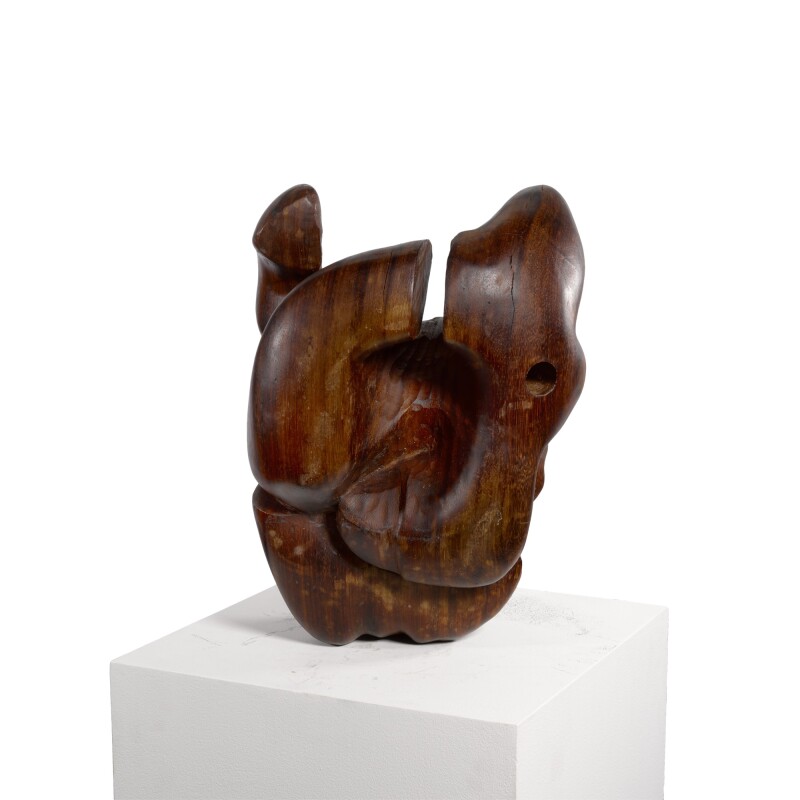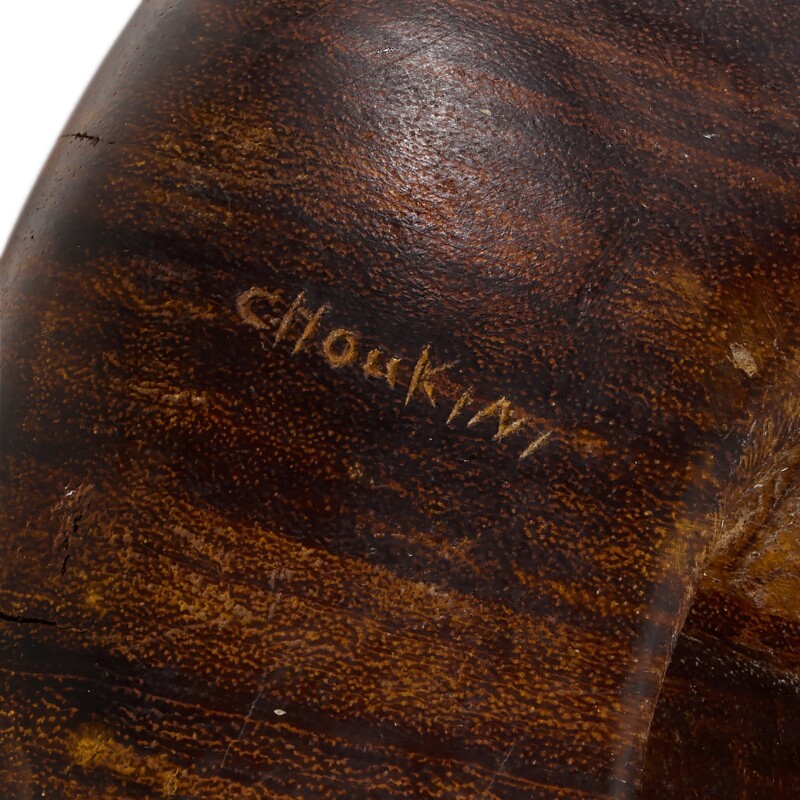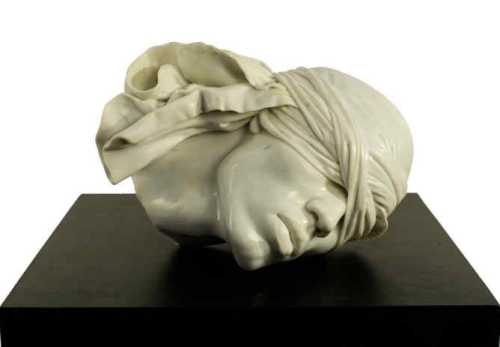- Untitled 1971
- Sculpture
- 43 * 34 * 25.5 cm
- Editions: تکنسخه
23 March 2022
Estimation
£12,000
15,821 USD
-
£18,000
23,731 USD
Unsold
Artwork Description
Born in Lebanon and shaped by his studies in the Ecole des Beaux-Arts in Paris, as well as his travels to Japan, Chaouki Choukini is recognized internationally for his prolific 40-year-long artistic career. His work is characterized by remarkably elegant works of pure, majestic outlines, executed in masterly fashion using a variety of materials.
As early as 1978, Chaouki was awarded the Prix de la Jeune Sculpture. In 1984, he discovered Japan during a trip that left a lasting impression on his artistic approach, characterized by virtuoso treatment of primitive forms of nature in all their simplicity. His poetic, musical works gained him worldwide commendation. In particular, Chaouki received the Prix de la Fondation Taylor then, in 2015, the prestigious Fondation Pierre Gianadda Sculpture Prize awarded by the Paris École des Beaux-Arts.
Attributed to 1971, this zoomorphic sculpture evokes the head of a ram, in what strikes the eye as a tension between edges and curves, juxtaposed with softly layered biomorphic protrusions. Years before his travel to Japan, Choukini already shows in this work an exceptionally acute polishing technique, fashioning an interplay between the fullness of cubist elements and hollow curves, resulting in a lively minimalist aesthetic.

The ram’s head is a motif that has been employed in sculpture since the beginning of civilisation (see above, sold at Sotheby’s New York, 2008, lot 23). It has been readapted ever since, and made striking appearances in modern art. It was notably introduced by Pablo Picasso in several paintings, sketches and sculptures. Here, the modernist aura that radiates from this piece paradoxically retains a classic touch, something in Choukini’s work that Lebanese poet Salah Stétié describes as ‘soberly Baroque’ (2019). The figure of the ram, which carries heavy traditional significance, certainly plays a role in this vision. The animal occupies a symbolic role in all mythologies: whether in the Chinese Zodiac, Christian parables, or in the Native American and African folklores, the head of the ram is used as a potent mark, often bound to notions of life forces. Besides, the animal is known to inhabit arid habitats, navigating rocky edges and abrupt cliffs. The artist often expressed his attachment to Lebanese views of mountains and valleys, that he refers to as ‘landscape of childhood’(Arab News 2020). Seen within the prism of Choukini’s upbringing, this sculpture of Iroko wood, a solid African tree specimen, seem to gain totemic virtues – that of a sacred object, emblematic of a place, its people and the vivid memories associated to them.
Chaouki Choukini continues to work in his Normandy studio in the heart of the countryside.
More lots by Chaouki Choukini

Figure
Estimation
€40,000
46,512 USD
-
€60,000
69,767 USD
Sale Date
Millon & Associés
-
6 July 2025
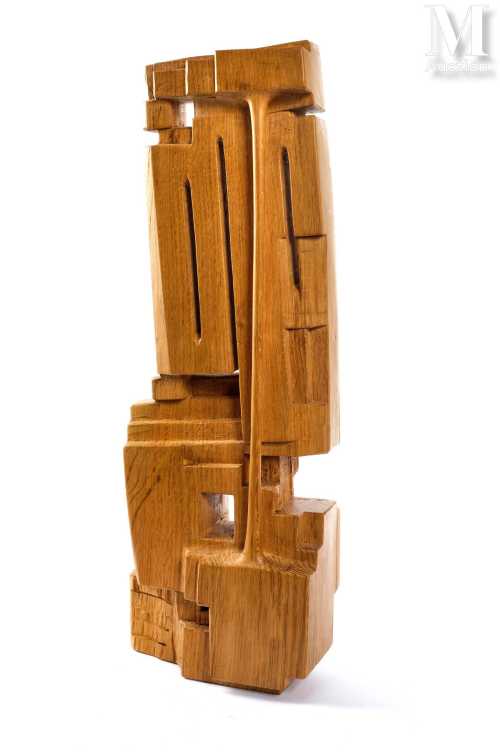
L'Antique Beirut
Estimation
€12,000
13,953 USD
-
€18,000
20,930 USD
Realized Price
€14,800
17,209 USD
1.333%
Sale Date
Millon & Associés
-
6 July 2025
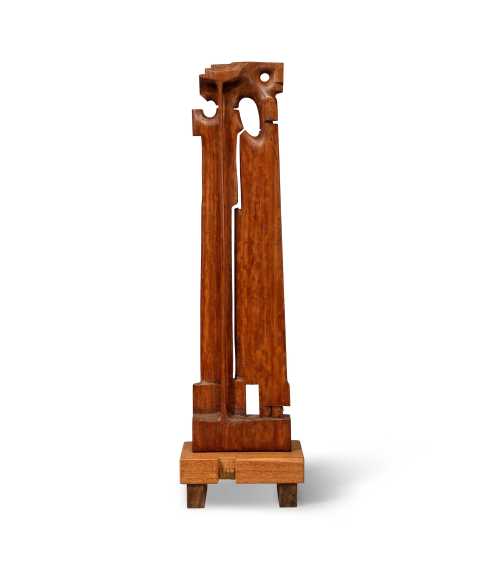
Equation Existentielle
Estimation
£30,000
40,000 USD
-
£40,000
53,333 USD
Realized Price
£38,400
51,200 USD
9.714%
Sale Date
Bonhams
-
25 November 2025
Realized Price
30,661 USD
Min Estimate
17,641 USD
Max Estimate
24,368 USD
Average Artwork Worth
+81.681%
Average Growth of Artwork Worth
Sales Performance Against Estimates
Average & Median Sold Lot Value
2021 - 2025
Performance vs. Estimate
2021 - 2025
Sell-through Rate
2021 - 2025
Similar Artworks

Bouquet
Estimation
€2,500
2,890 USD
-
€3,500
4,046 USD
Realized Price
€5,460
6,312 USD
82%
Sale Date
Cornette de Saint Cyr
-
27 October 2021
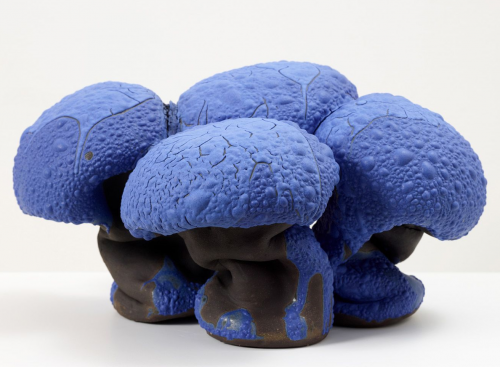
Bouquet
Estimation
€2,500
2,890 USD
-
€3,500
4,046 USD
Sale Date
Cornette de Saint Cyr
-
27 October 2021
